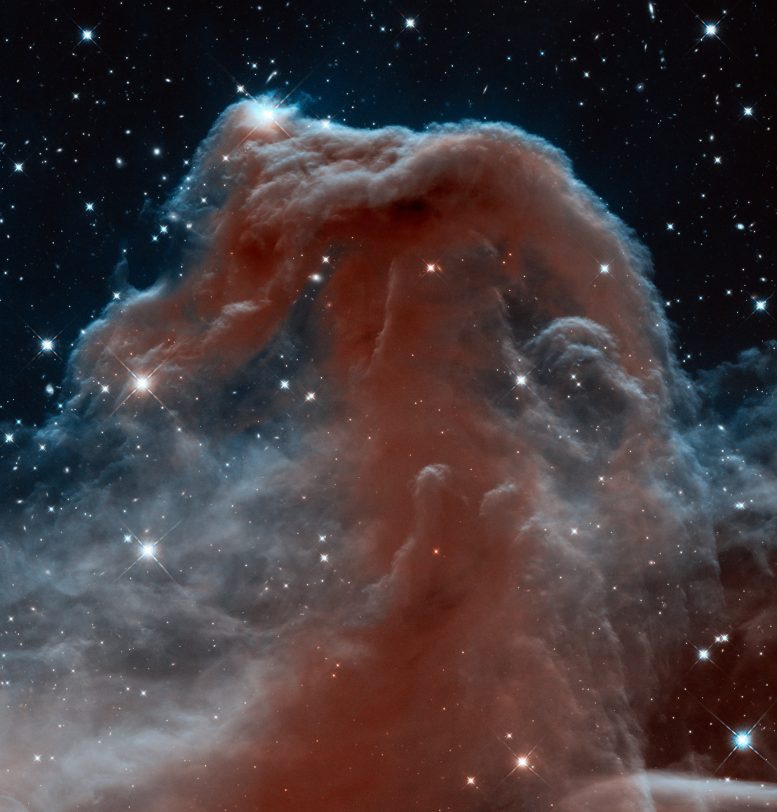
Hubble Space Telescope image of the iconic Horsehead Nebula in infrared light. Credit: NASA/ESA/Hubble Heritage Team
Unlike other celestial objects there is no question how the Horsehead Nebula got its name. This iconic silhouette of a horse’s head and neck pokes up mysteriously from what look like whitecaps of interstellar foam. The nebula has graced astronomy books ever since its discovery over a century ago. But Hubble’s infrared vision shows the horse in a new light. The nebula, shadowy in optical light, appears transparent and ethereal when seen at infrared wavelengths. This pillar of tenuous hydrogen gas laced with dust is resisting being eroded away by the radiation from a nearby star. The nebula is a small part of a vast star-forming complex in the constellation Orion. The Horsehead will disintegrate in about 5 million years.
Astronomers have used NASA’s Hubble Space Telescope to photograph the iconic Horsehead Nebula in a new, infrared light to mark the 23rd anniversary of the famous observatory’s launch aboard the space shuttle Discovery on April 24, 1990.
Looking like an apparition rising from whitecaps of interstellar foam, the iconic Horsehead Nebula has graced astronomy books ever since its discovery more than a century ago. The nebula is a favorite target for amateur and professional astronomers. It is shadowy in optical light. It appears transparent and ethereal when seen at infrared wavelengths. The rich tapestry of the Horsehead Nebula pops out against the backdrop of Milky Way stars and distant galaxies that easily are visible in infrared light.
Hubble has been producing ground-breaking science for two decades. During that time, it has benefited from a slew of upgrades from space shuttle missions, including the 2009 addition of a new imaging workhorse, the high-resolution Wide Field Camera 3 that took the new portrait of the Horsehead.
The nebula is part of the Orion Molecular Cloud, located about 1,500 light-years away in the constellation Orion. The cloud also contains other well-known objects such as the Great Orion Nebula (M42), the Flame Nebula, and Barnard’s Loop. It is one of the nearest and most easily photographed regions in which massive stars are being formed.
In the Hubble image, the backlit wisps along the Horsehead’s upper ridge are being illuminated by Sigma Orionis, a young five-star system just out of view. Along the nebula’s top ridge, two fledgling stars peek out from their now-exposed nurseries.
Scientists know a harsh ultraviolet glare from one of these bright stars is slowly evaporating the nebula. Gas clouds surrounding the Horsehead already have dissipated, but the tip of the jutting pillar contains a slightly higher density of hydrogen and helium, laced with dust. This casts a shadow that protects material behind it from being stripped away by intense stellar radiation evaporating the hydrogen cloud, and a pillar structure forms.


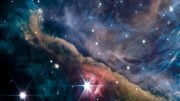

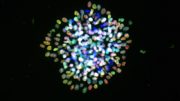
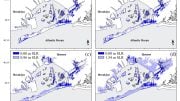

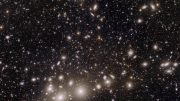

Be the first to comment on "Hubble Views the Horsehead Nebula"